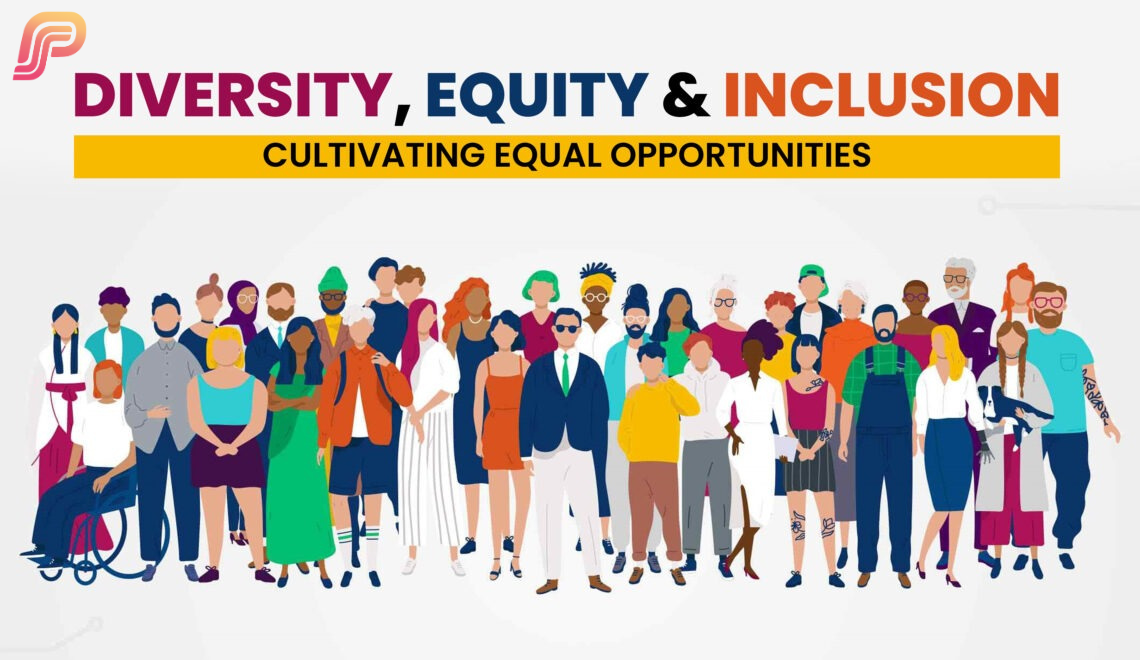Diversity and Inclusion (D&I) are not merely corporate buzzwords but essential pillars that underpin a progressive and innovative workplace. The essence of D&I lies in creating an environment that is equitable and fosters a sense of belonging for individuals from diverse backgrounds.
- Purpose of Diversity and Inclusion in Modern Workplace
By valuing and integrating a mosaic of perspectives, companies cultivate a culture rich in ideas, leading to superior decision-making, enhanced creativity, and ultimately, robust business outcomes. This commitment to diversity translates into a dynamic workforce where every voice is heard and valued, paving the way for sustained innovation and success.
- Benefits of D&I and the Importance of an Inclusive Culture
The advantages of D&I extend far beyond the realms of fairness and ethical responsibility. It is a formidable strategic asset that can propel organizations to new heights. Inclusive cultures are fertile grounds for a plethora of ideas, driving better problem-solving and breakthrough innovations. The tangible benefits are evident in increased employee engagement, higher retention rates, and amplified business performance. When employees feel included and appreciated, their commitment and productivity soar, fostering a thriving organizational ecosystem. An inclusive culture is not just a moral imperative but a catalyst for achieving unparalleled business success.
- Common Barriers to D&I
The journey to building a diverse and inclusive workplace is fraught with challenges. Unconscious biases can insidiously influence hiring decisions, while a lack of diverse leadership can deter potential talent. Ineffectively implemented policies often fail to shift ingrained mindsets. Additionally, varying communication styles can erect barriers to inclusivity. Overcoming these obstacles requires a sustained and multifaceted approach:
- Continuous education for employees
- Transparent pathways for career advancement
- A culture that champions open communication and celebrates diversity.
Addressing these barriers is crucial to fostering a truly inclusive environment where every individual can thrive.
- The Changing Trend
The contemporary workplace is increasingly embracing D&I, and for compelling reasons: it drives business success. Diverse teams are synonymous with fresh perspectives and superior problem-solving capabilities, catalyzing innovation and yielding stronger results. As the workforce itself becomes more diverse, companies must reflect this evolution to attract and retain top-tier talent. This alignment with the values of a new generation not only enhances a company’s appeal but also positions it competitively in the marketplace. D&I is not just a moral or ethical consideration but a strategic necessity in the modern business landscape.
- Recruitment Firms: Pioneers in Advancing D&I
Recruitment firms stand at the vanguard of advancing D&I initiatives. They play a pivotal role in broadening the talent pool by targeting diverse channels and organizations. Implementing standardized interviews, involving diverse hiring panels, and training stakeholders on unconscious bias are critical measures to ensure fairness in the hiring process. By tracking data and advocating for transparency, recruitment firms can identify and rectify biases that may impede progress. They act as vital conduits, bridging the gap between companies and a more diverse, qualified workforce. In essence, recruitment firms are instrumental in fostering an inclusive hiring process that champions diversity and cultivates excellence.
Summary / Conclusion
In conclusion, embracing D&I is not a mere trend but an essential strategy for sustainable growth and innovation. By confronting barriers and leveraging the expertise of recruitment firms, organizations can cultivate a workforce that is as diverse as it is dynamic. This strategic embrace of D&I is the pathway to creating a workplace where every individual can contribute to and share in the collective success.






